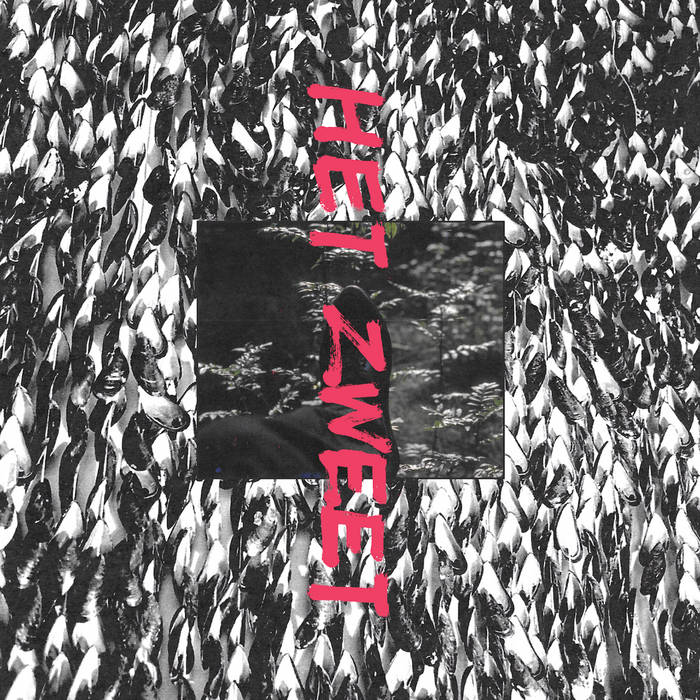
The latest missive from low key, prestigious Modal Analysis label, a product of Athens’ similarly low key, prestigious Techno scene, Archives Volume 1: 1982-1988, is a new twist for the well-established imprint: a thoroughly researched, exhaustively presented compilation of work from Het Zweet, the ‘80s Dutch underground legend whose work has only lately risen to greater prominence.
Modal Analysis is known primarily for its stellar run of singles from top Techno names: Cassegrain, The Exaltics, Delta Funktionen, Umwelt, ANFS, and many more figures, all experimental bent with consistently excellent results. The label’s albums thus far have been decidedly more out-there affairs; Het Zweet – Archives 1: 82-88 is well in fitting with this tendency, the most outward bound yet and a striking love letter to a musician little appreciated in his own time.
A native of Breda, Holland, Marien Van Oers initially arose out of the early ‘80s industrial boom inspired by the English pioneers of the genre: Cabaret Voltaire, Fad Gadget, Test Dept., and especially Throbbing Gristle and its subsequent offshoots, whose wayward, sometimes amateurish explosions of noise and rhythm led the way for many similar outbursts across the continent. A moderate-sized industrial city south of Rotterdam, it shares in the cultural ideas of its larger, more famous neighbor, an atmosphere that spread out across Belgium and northern France to produce many of the most notable acts of industrial’s second wave. These are prosperous cities but hardly rich, and their disdain for the highbrow culture of Amsterdam, Paris, or Brussels has created an obsession for dark, intense, grimy sounds since the ‘80s.
Het Zweet is Dutch for ‘The Sweat’, which is a good entry point to interpreting his music. Of the aforementioned UK innovators, it’s probably Fad Gadget and Test Dept. who are most relevant here—defiant outsiders whose extreme performance styles, homemade instrumentation, and aggression singled them out even amongst their peers. Composed on a homemade assortment of instruments including a bowed shopping cart reportedly also employed to transport the other gear to concerts, a Korg MS-10, and an old tape recorder, Van Oers slowly built up the layers on the tape to create his compositions, integrating a wide variety of different influences in the resulting collages.
The shorter tracks, usually the most recognizably industrial, often feature the sort of repetitive, sequenced basslines and minimalist pop structures found in other groups of the era, sometimes almost screaming Frank Tovey in sound while distinctly lacking his songcraft and lyrical obsessions. Often distorted past comprehensibility, his mantra-like shouted vocals seem hardly the point even in the shorter efforts here, which are mostly concentrated on the first half of the compilation. Instead, he assembles riffs out of looping, angular drum lines, pummeling bass sequences, shouted vocals, and all manner of sounds flown in to complete the picture: wind instruments, bracing blasts of noise, indescribable electronic detritus, occasional operatic choruses, and possibly literally the kitchen sink. It’s clear he’s taken great care in assembling these pieces given their obvious musicality and wide range of influences, from jazz to European academic music to the more contemporary sounds already discussed.
When Het Zweet spreads out, as seen in the 8-10 minute pieces showcased on the second half, things become decidedly more difficult to take but also more interesting: it’s here where comparisons to Coil, Test Dept. or Muslimgauze become more apt. Though the early material predates Byrn Jones’s first released efforts, these long, trance-inducing and often instrumental jams are rare parallels to his own outsider sound and are similarly free of obvious comparisons, except perhaps to each other. Stripped of the more obvious pop influences, worked out at length, and abstracted, sometimes with more irregular pulses, the experimental aspect of the pieces comes to the fore, with the bowed drones or foghorn tones of his homemade instrumentation providing rich texture against the more incidental elements, often moaning or sung, manipulated vocals. At times the pieces also abruptly move into new sections, akin to movements in composition. The term ‘industrial’ seems hardly appropriate to this side of his work, concerned as it is with trance states, even as its components remain largely unchanged.
Also included is a recording of a live set in his hometown of Breda dated February 17, 1984, which provides a rawer look at his work. Reportedly a wild performer like Fad Gadget given to pranks like coating himself in clay or occasionally baiting his audience with ridiculous appearances, the performance sees him throwing all of his varied sides together in its 40 minute duration, very recognizably him though lacking the careful sequencing and curation of the vinyl sides. This is probably intentional: for all his meticulous layering, Het Zweet clearly had a contrarian streak in him alongside his urban, academic tendencies. Nowadays in Holland, Van Oers is usually considered a composer whose work is sometimes interpreted in striking new ways without resorting to his own obscure methods. The parallels between these sounds and techno or modern experimental electronic music are clear, if their influence towards it is less so. Laboriously picked from over 100 hours of tapes, the care put into this compilation rings true in its sequencing and continuity, providing an authoritative overview of an early Dutch pioneer whose due has only come to him since his passing in 2013.
-Albert Freeman
Check out Dirty Epic music recommendations here.
Listen to our podcasts here.
Find out more about our events here.

